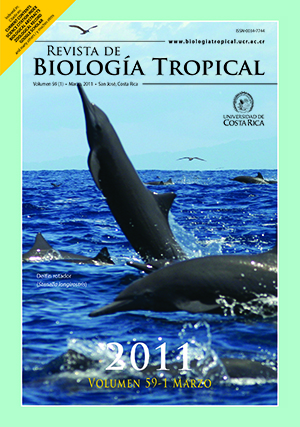Abstract
Plants of the Verbenaceae family, like L. camara, have called the attention of researchers, not only because of its high diversity and its distribution around the world, but also for its variable use as popular medicine to treat diseases like tetanus, rheumatism and malaria, and as bactericide and insecticide. To assess this, the morphology and ontogeny of the inflorescences of Lantana camara and the chemical composition of volatile secondary metabolites were analyzed at three different ontogeny stages. Plants were collected from the experimental crop area in CENIVAM, Bucaramanga, Colombia. Fresh inflorescence stages were established and analyzed using a stereoscopic microscope, fixed in FAA and included in parafine. Transversal and longitudinal 10μm thick sections were prepared using a rotative microtome, safranine-fastgreenstained and were observed and photographed using a light microscope. The chemical composition of volatile secondary metabolites were analyzed for each stage. The analytes, obtained from 0.7g of plant, were isolated by solid phase micro-extraction in the headspace mode (HS-SPME) and were placed in 20ml vials. The components were analyzed by gas chromatography coupled to mass spectrometry (GC-MS). Stage I was microscopically characterized by an immature development in which the meristematic differentiation begins with a mass of cells. In Stage II, the morphogenetic movement gives way to the formation of the respective floral sexual structures, calyx and corolla. In Stage III, the different organs are conspicuous: four stamens epipetals and didynamous, monocarpelar, biloculate and globose gynoecium, upper ovary and lateral stigma; the flowers are hermaphro-ditic. The main secondary metabolites detected by GC-MS were bicyclosesquiphellandrene, E-β-farnesene, E-β-caryophyllene, γ-muurolene + γ-curcumene and α-zingiberene. Nevertheless, this study reports for the first time in plant species α-gurjunene, γ-amorphene, α-muurolene, sesquithujene, α-trans-bergamotene and trans-cadina-1,4-diene. The diversity of compounds found can be only explained by the extraction methods employed, the developmental stages and section of the plant, the geographic conditions, collection time and the genetic constitution of the evaluated species.
Comments

This work is licensed under a Creative Commons Attribution 4.0 International License.
Copyright (c) 2011 Revista de Biología Tropical






